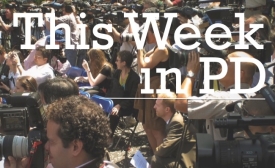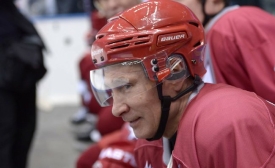russia
Russia's federal communications agency Roskomnadzor has signed an order on issuing a certificate of registration in Russia to US news channel CNN International, the agency's spokesman, Vadim Ampelonsky, said Thursday.
As conflict persists in the east, the massive financial lifeline pledged by the international community is rife with uncertainties, especially linked to the country's debt. Strangled by 10 months of deadly fighting between government forces and pro-Russia separatists, Ukraine's backers have proposed a new $40 billion, four-year deal to support government finances and combat a severe recession.

Are restrictions on the press affecting non-state media and governments from broadcasting abroad?
It’s not a good time for freedom of the press. The non-profit organization Reporters Without Borders, devoted to supporting journalists worldwide, published its annual index this month. In six continents, the conditions for free media in 2014 became not just worse, but “dramatically worse,” according to the group’s “2015 World Press Freedom Index.”
The 2014 CPD Annual Review demonstrates that although public diplomacy is present in every region of the world, it is predominantly in the northern hemisphere. North America is ranked the most active region in public diplomacy, with the United States contributing the most. Asia (Asia Pacific, Southeast Asia and Central Asia combined) comes in second, and Europe is third, with almost the same presence as Asia. As expected, China, Japan, and South Korea take the lead as the major actors in Asia Pacific. India is also very active in PD in South Asia.
The enlisting of digital diplomacy in Russia's national propaganda efforts has caused some diplomacy scholars and practitioners to wonder if Russia isn't ruining digital diplomacy for the rest of us.
As part of the CPD Annual Review process, in January we highlighted some of the year’s key public diplomacy moments in our Top 10 List of the most notable stories from 2014.

Ilan Manor offers a new way to conceptualize digital diplomacy.







